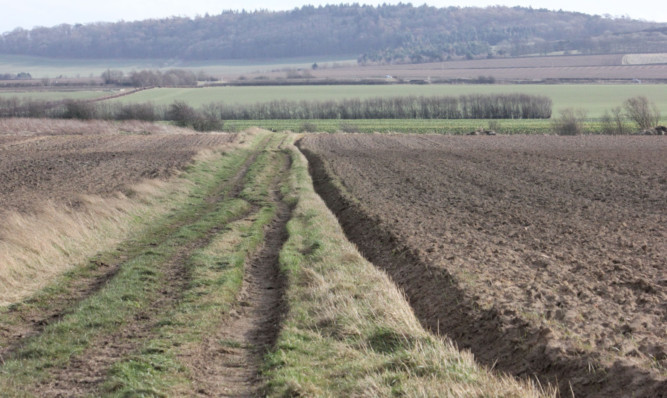The relationship between public access and new greening rules was brought to the fore in discussions at the first of a series of land access workshops, held in East Lothian.
Run in partnership between the SRUC, British Horse Society Scotland, Scottish Land and Estates and NFU Scotland, the meetings aim to provide a platform where any long-running issues between land managers, farmers and those on horseback can be addressed in a relaxed atmosphere.
“Evidence suggests a lack of knowledge and understanding of each other’s interests,” said a spokesperson from the SRUC.
“Complaints registered with NFUS and Scottish Land & Estates include horses dunging outside homes, riding through fields with young lambs or calves, damage to environmentally sensitive areas, or the ignoring of signs.
“Meanwhile horse riders have reported locked gates suddenly blocking off previously rideable routes, an aggressive attitude by some landowners or managers, and the reluctance of some farmers to allow horses into stubble or grass fields when Scotland’s access legislation would suggest these fields should, on the whole, be accessible.”
During the workshop, at West Fenton Farm, near North Berwick, legal and technical policy manager for NFU Scotland Gemma Thomson clarified that no rider, cyclist or walker has an “absolute” right to access across or around farmland simply a right of “responsible” access.
Nonetheless, she said there is rising concern over the contentious issue that farmers may be subject to financial penalty if new greening measures which will be implemented under the Scottish Rural Development Programme (SRDP) this year are compromised.
However, according to the BHS, Scotland’s farmers will not be penalised as a result of any third-party damage to Ecological Focus Areas.
“No grant of financial payment through the EU or Scottish Government can make stipulation that is contrary to the law of the land, which includes access rights,” said BHS director of Scotland Helene Mauchlen.
“Furthermore, there is a long-established principle that payment will not be withheld because of any path having been formed by people exercising their legal access rights, whether on foot, cycle or horseback.
“If damage is caused that is outwith a farmer’s control, that will be taken into consideration,” she said.
According to the BHS, none of the detail under the new SRDP greening requirements conflicts with access legislation.
The usual access rights and responsibilities will apply to permanent grassland, crop diversification, and the fallow, catch crop and nitrogen-fixing crop options under EFAs, as well as to field margins and buffer strips.
Mrs Mauchlen said: “Farmers are obliged to control injurious weeds, and are not allowed to crop EFAs, but there is nothing in the greening rules to preclude maintenance, or to suggest that damage from any cause would be penalised, whether by access or other means.
“Fields of growing crops are excluded from access rights,” she added. “But the Scottish Outdoor Access Code states quite clearly that horse-riders, as well as other access takers, can exercise their rights around the margins of fields in which crops are growing, even if the margin has been sown with a crop.”
Access rights can also, she explained, be exercised in fields of stubble and fields where grass is grown for hay or silage before it reaches a stage of growth around ankle height.
“The British Horse Society always supports farming,” added Mrs Mauchlen.
Speaking at West Fenton, Gillian McKnight, from the SAC Consulting Division of SRUC, said additional funding will actually be made available through the SRDP to help improve public access.
Farmers and land managers will be able to apply for grant funding to create new paths, with either bound or semi-bound surfaces, to upgrade existing paths, to install self-closing gates, stock fencing, drainage ditches, path bridges and for related signage, boardwalks, seats, tree safety and so forth, in relation to the provision of barrier-free public access.
The funding will be made available under the £86 million Leader programme, which includes farm diversification and SMEs.
“Applications of up to £75,000 (level 1) in value should be relatively straightforward and will be approved locally,” Ms McKnight said. Applications for grants above £75,000 (level 2) will be considered nationally.
Ms McKnight added: “Be educated. Whether land manager or horse rider, know what your responsibilities are under the Scottish Outdoor Access Code.
“Then make friends, know whose land you are riding on, or who is riding on your land. A smile, a wave and a conversation go a long way.
“Finally, plan your route accordingly, taking account of weather, time of day and whether it is a busy time on the farm.”
